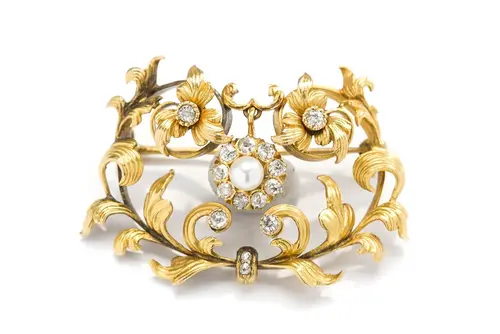


Biedermeier is a term for the style prevailing in Central Europe, Scandinavia and northern Italy between 1815 and 1848. The most important centres of this style were Germany and Austria (especially Munich and Vienna), and it is also sometimes used to describe the bourgeois culture of the time.
Biedermeier style manifested itself in many fields of art - in painting, design, literature, fashion, jewellery or furniture. It manifested itself most fully in the latter, the interior of the "good bourgeoisie" was comfortable, bright, and built of solid materials. Furniture was devoid of exaggerated ornamentation, and floral motifs were sometimes used. The most popular furniture designer and manufacturer was Michael Thonet who created famous "chair number 4" - a classic element of Viennese cafes and "chair number 14" for which this German-Austrian carpenter won the gold medal at the World Exhibition in Paris in 1867.
Jewellery products of the Biedermeier period are characterised by sentimentalism, simple but often captivating jewellery was produced. In the period after the Napoleonic wars "souvenir" jewellery became very popular. Goldsmiths produced rings with engraved names and mourning jewellery. It is interesting to note that it was popular to give jewellery with hair. Brooches depicted family members and classical landscapes, and beads were also popular.
The name of the direction is derived from the humorous characters in the volume of poems Biedermaiers Liederlust (1869), by Adolf Kussmaul, S.F. Sauter and Ludwig Eichrodt. The Biedermeier of the title is a simple bourgeois, with no higher aspirations and limited horizons. This slightly malicious assessment of Biedermeier may seem unfair today.